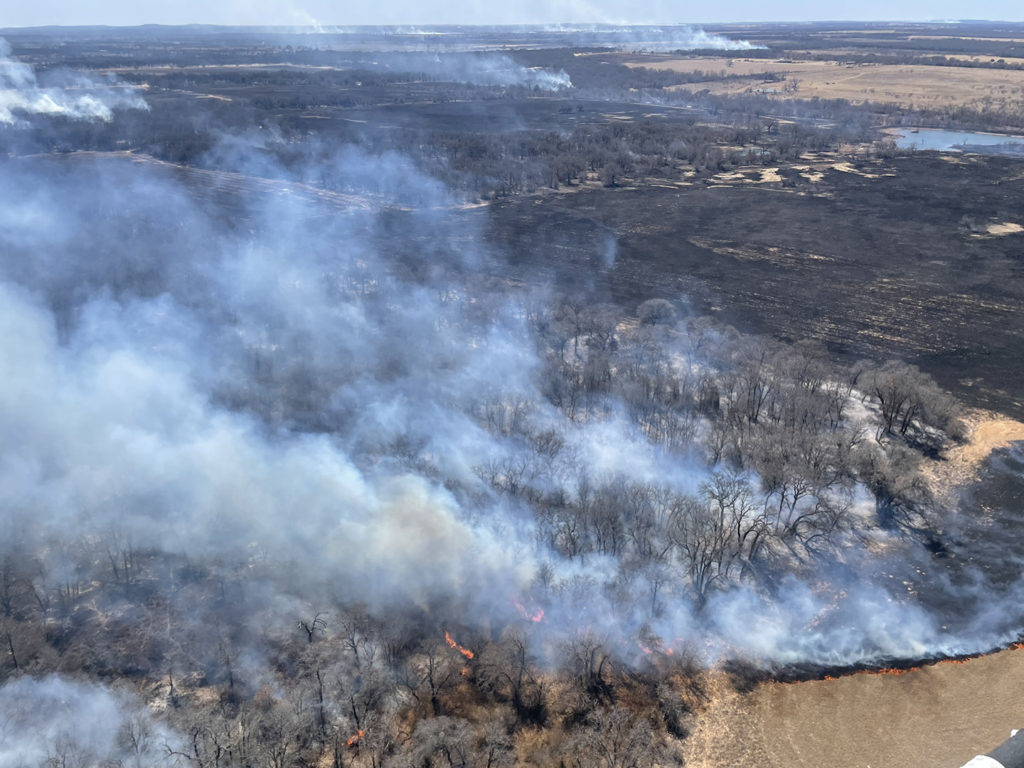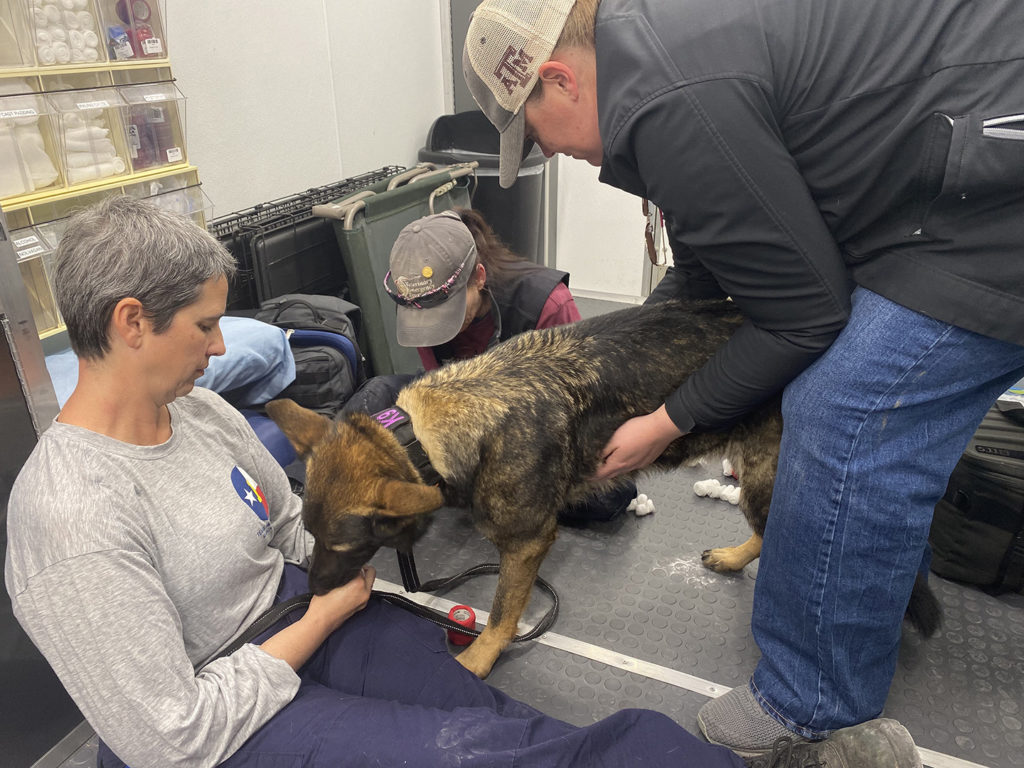Texas A&M Veterinary Emergency Team Deploys To Provide Wildfire Relief

Fourteen members of the Texas A&M Veterinary Emergency Team (VET) deployed to Eastland County over the weekend to assist with relief efforts associated with the Eastland Complex Fire, a collective term for seven wildfires burning in North Central Texas near the towns of Carbon, Rising Star, and Gorman.
Team members, joined by Texas A&M AgriLife Extension Disaster Assessment and Recovery (DAR) Agents, are supporting those efforts in several ways, including responding to animal emergencies in the field, but the team’s first priority is to provide veterinary medical support for local residents, according to VET director Dr. Wesley Bissett.
“The local communities have done a great job coming together in a tough situation, but these fires are impacting a very large area so veterinary resources are stretched thin,” said Bissett, who also serves as an associate professor of emergency management in the Texas A&M College of Veterinary Medicine & Biomedical Sciences (CVMBS). “Trying to figure out where we can best assist has been our priority in the first 48 hours.”
While the fires have consumed more than 54,000 acres as of March 21, rain in the area on Monday could not only aid firefighting efforts but also give residents and first responders a much-needed chance to further assess the situation.
“This has been a rapidly evolving situation; prior to the rain there were a number of new fires developing, so it’s been difficult to properly assess the whole picture,” Bissett said. “Hopefully the rain will help calm down the situation some, and we can get a better grasp on the extent of services needed.”
So far, the VET has responded to several animal field emergencies and has cared for animals at their base of operations in Eastland.

For the field calls, the team is aided by aerial surveillance coordinated with the Texas A&M Agrilife Extension Service, Texas Animal Health Commission, and the Texas and Southwestern Cattle Raisers Association (TSCRA) Special Rangers.
Spotters in helicopters identify potential areas in need of veterinary assistance, relay the coordinates to the teams on the ground, and then those teams work with the TSCRA rangers to get access to those locations.
“The aerial assessments were new for us,” Bissett said, “but it really helped us quickly identify where to allocate our people to have the greatest impact on animal well-being.”
The team also anticipates seeing more small animal cases as those animals come out of hiding.
The VET is also helping care for search and rescue dogs, a process that includes bandaging the feet of the dogs before they go out into the field and monitoring their condition while they’re working and at the end of their shifts.
“Just yesterday we had three new fires pop up, so we’re making sure those dogs are taken care of and in top condition when and where they’re needed,” Bissett said.
###
For more information about the Texas A&M College of Veterinary Medicine & Biomedical Sciences, please visit our website at vetmed.tamu.edu or join us on Facebook, Instagram, and Twitter.
Contact Information: Jennifer Gauntt, Director of VMBS Communications, Texas A&M College of Veterinary Medicine & Biomedical Sciences, jgauntt@cvm.tamu.edu, 979-862-4216


